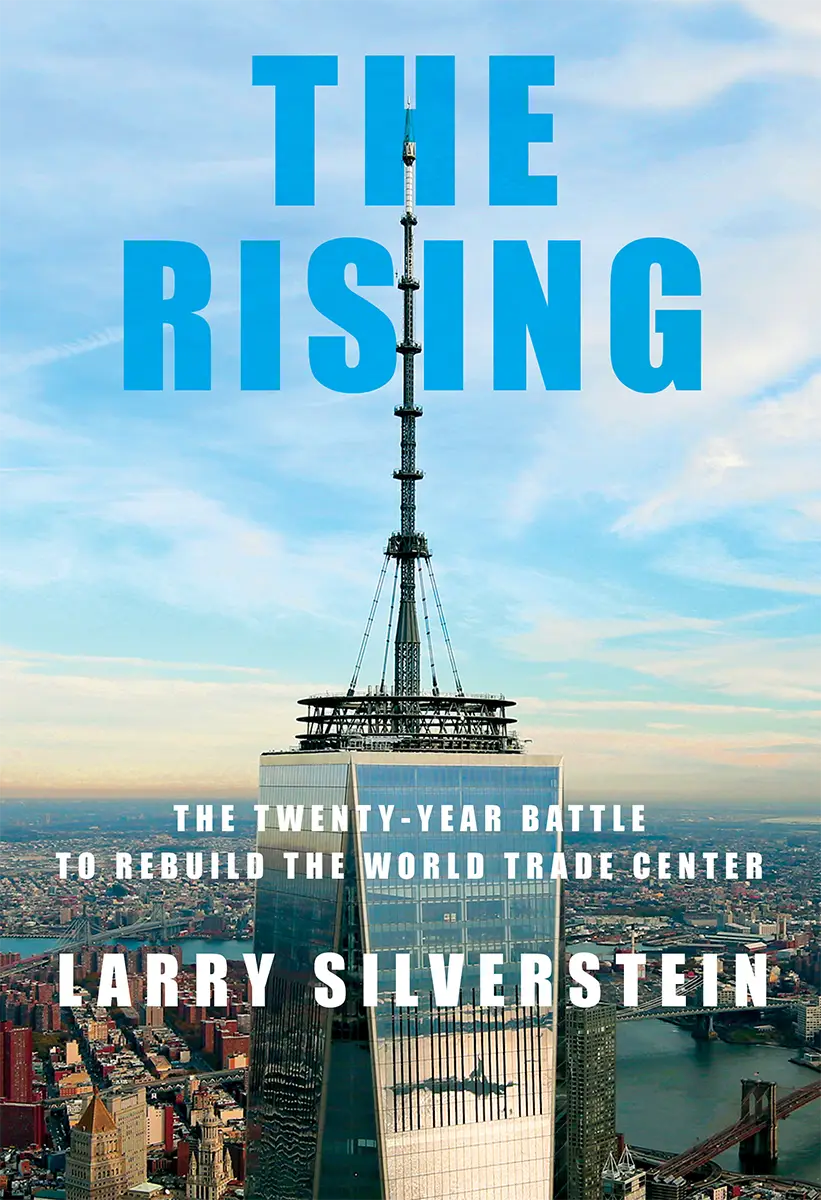In Memoir, Larry Silverstein Provides an Insider's View of Ground Zero's Transformation
Review: The Rising: The Twenty-Year Battle to Rebuild the World Trade Center by Larry Silverstein

Larry Silverstein, the 93-year-old New York developer who played a leading role in rebuilding the World Trade Center, has scores to settle. Doing so is one of the central aims of The Rising, Silverstein’s recounting of the reconstruction saga that is scheduled to be released—unsurprisingly—on the eve of September 11. His targets? There are many: the “mean-spirited” press, exemplified by New York Times editors who cast Silverstein as greedy; self-serving politicians, including former mayor Rudy Giuliani and former governor George Pataki, who acted cynically to advance their ambitions for higher office; insurance companies that Silverstein battled in court, successfully winning a payout well above the insured value of the Twin Towers. And, most important of all, the “capricious and cavalier” Port Authority of New York and New Jersey, the bureaucratic entity that controls the Trade Center site and with which Silverstein traded blame for years over delays and cost overruns.

The Rising: The Twenty-Year Battle to Rebuild the World Trade Center, by Larry Silverstein. Knopf, 368 pages, $35.
Silverstein’s involvement in the effort was something of an accident. In 2001, before the attacks, his firm had beaten out several larger competitors in a multibillion-dollar bid to lease and operate the Port Authority–owned complex for 99 years—a lease that he retained after the towers were destroyed, along with an obligation to pay the Port Authority $10 million in monthly rent. And his presence was unavoidable for another reason: as the holder of insurance policies, Silverstein’s cooperation was needed to win billions from insurers to help pay for the redevelopment.
Nonetheless, as Silverstein details in the memoir, numerous politicians and the Port Authority repeatedly tried to buy him out or otherwise lessen his influence over the planning process. Even those of us who dislike Giuliani and mistrust the Port Authority may be inclined to question whether a single wealthy individual should have exerted so much control over a publicly owned site of grave significance.
Another of Silverstein’s aims in the book is to address this skepticism. In contrast to the corrupt and wasteful Port Authority, Silverstein presents himself as hard-nosed, capable, and committed to the project out of civic duty. “No one seemed to understand that after 9/11 my involvement with the Trade Center was not primarily about money or profit,” he writes. “I was determined to show the people who had attacked America that we don’t give up. That we rebuild.”
Silverstein is not much of a memoirist. His retelling is heavy on trite grandstanding and light on evidence of introspection. Readers will have trouble believing that profit was as far from his mind as he suggests, and it is difficult to take his complaints about the Port Authority’s misuse of taxpayer money seriously when another of his gripes with the agency was its reluctance to guarantee loans for his commercial towers, or when he later brags of negotiating a lopsided agreement that required the authority to fund the luxe shopping center in the base of 3 World Trade Center. Rather, The Rising is most interesting when it affords insight into how Silverstein and his partners approached valuing buildings, structuring financial agreements, and engaging in difficult multiparty negotiations—when, that is, it sticks to the mechanics of real estate.
And what of the complex that emerged from the arduous process described in this book—the collection of Silverstein-developed offices, the Port Authority–developed One World Trade Center (formerly known as the Freedom Tower) by Skidmore, Owings & Merrill, Santiago Calatrava’s stegosaurus-like PATH station, the vast memorial pools, the marble-clad mausoleum that is the Perelman Performing Arts Center, and everything else that now stands at Ground Zero? Silverstein justifiably takes pride in such successes as the shimmering 7 World Trade Center (also by SOM). But when he concludes that the complex is a “better version of New York,” it’s difficult not to reflect on all the money spent and the two decades of bitter wrangling between Silverstein, the authority, and other interested parties, and wonder: is this really the best we could have done?




